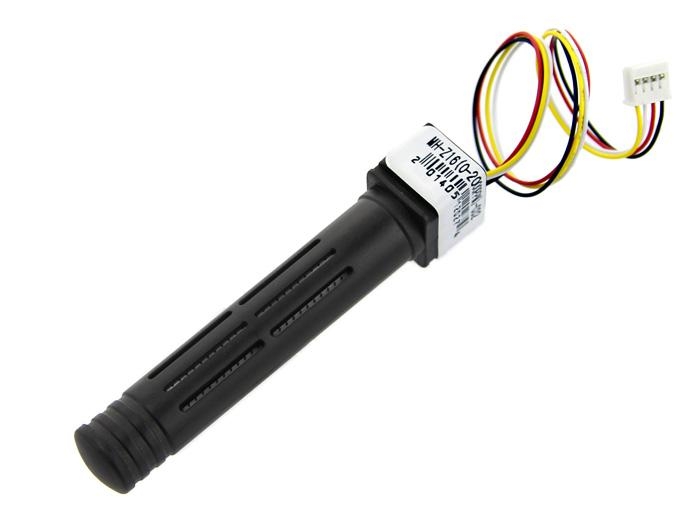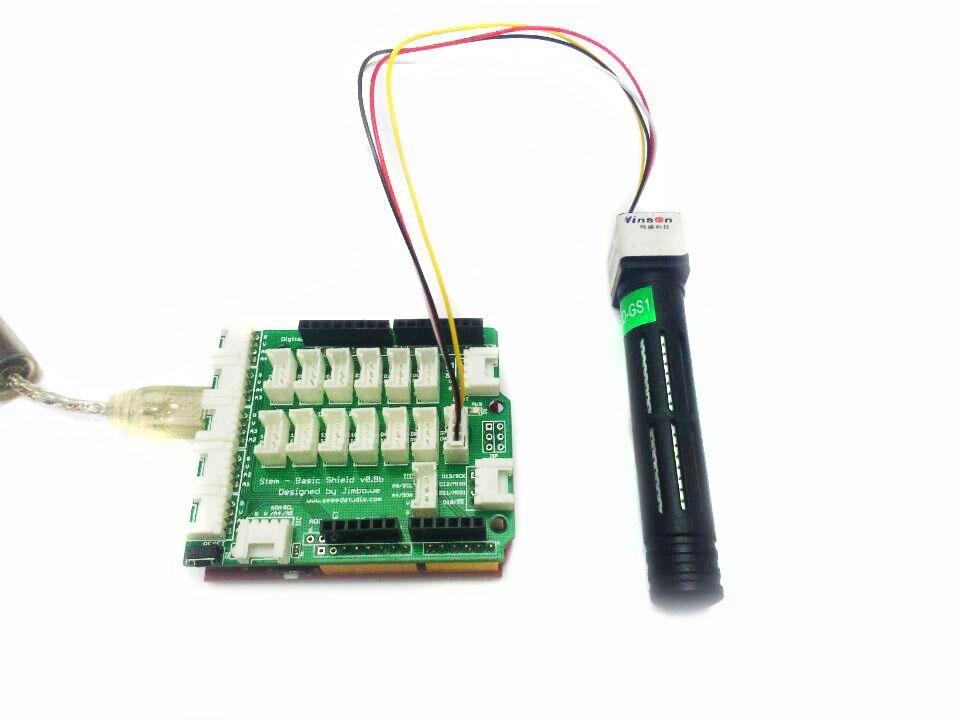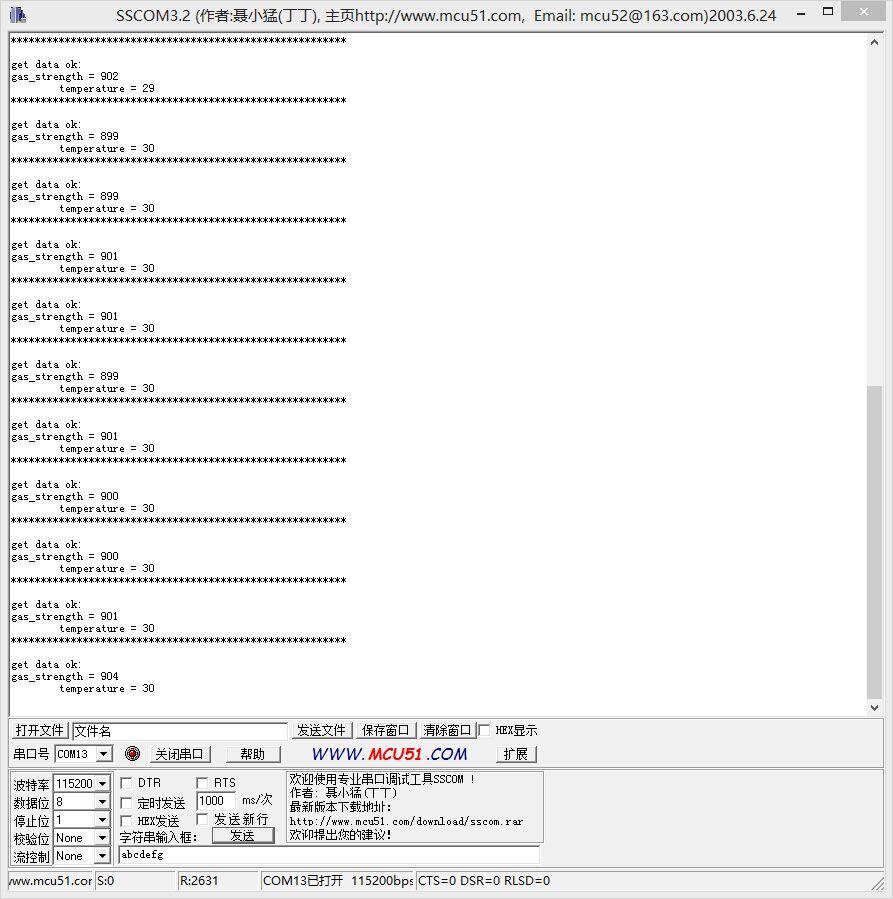Grove CO2 Sensor

The Grove - CO2 Sensor module is infrared CO2 sensor high sensitivity and high resolution. Infrared CO2 sensor MH-Z16 Is a general-purpose, small sensors, the use of non-dispersive infrared (NDIR) Present in the principle of the air CO2 Detect, with good selectivity, oxygen- dependent, long life, built-in temperature sensor, temperature compensation, with UART output, easy to use. It can be widely used in HVAC and indoor air quality monitoring, industrial process monitoring and security, agriculture and livestock production process monitoring.
Caution Note that the sensor value only reflects the approximated trend of gas concentration in a permissible error range. It DOES NOT represent the exact gas concentration. The detection of certain components in the air usually requires a more precise and costly instrument, which cannot be done with a single gas sensor. If your project is aimed at obtaining the gas concentration at a very precise level, then we do not recommend this gas sensor.
Specifications
Measuring the range of 0-2000 parts per million (PPM)
Resolution of 1 PPM 0-2000 parts per million (PPM)
Accuracy of 200 PPM
A Warm - up time 3 minutes
Response Time < 90s
Operating temperature 0 to 50℃
Operating Humidity 0% ~ 90% RH
Storage temperature - 20-60℃
Operating Voltage4.5 V to 6 V DC
The Current maximum Current of less than 100 ma, the average Current of less than 50 ma
Output mode UART
!!!Tip More details about Grove modules please refer to Grove System
Platforms Supported
Demonstration
Connect the module with Grove Shield using like following picture and use the program below to gain the voltage.
Please note that the best preheat time of the sensor is about 180s. For the detailed information about the sensor, please refer to the datasheet.


Calibration
If you need to calibrate the sensor, please upload below code to your Arduino.
!!!Warning Please preheat the sensor for at least 5 minutes before calibrating and make sure the sensor in fresh air.
Reference
350~450ppm: General outdoor environment
350~1000ppm:The air is fresh and breathing smooth
1000~2000ppm:The air was stagnant and feel asleep
5000ppm:Permissible exposure limit for an 8h work day
Resources
Last updated
Was this helpful?